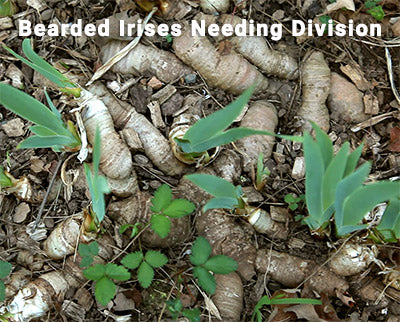Why Divide Your Perennial Plants?
Many perennial plants benefit from being divided every two to five years. If your plants look crowded, overgrown, or are not flowering as well as they used to, it might be time to divide them. Dividing perennials helps rejuvenate the plants, improve flowering, and increase your garden's overall health.
When to Divide Perennials
The timing for dividing perennials depends on the type of plant:
- Spring or Fall: Best for summer-flowering plants.
- Late Summer: Ideal for spring-flowering plants.
Avoid dividing during the hottest parts of summer or less than six weeks before the first frost, to reduce stress on the plants as they re-establish their roots.
How to Divide Different Types of Perennials
Clumping Plants
Clumping plants should be dug up carefully, preserving as many roots as possible. Use your fingers to divide the clumps or a tool like a soil knife for tougher roots.
Examples: Daylilies, Hostas, Iris, Salvia, and Ornamental Grasses.
Rhizomes
Rhizomes are thick roots that grow at or just below the soil surface. Divide these by breaking them at natural joints or cutting them. Discard any old, buggy, or diseased rhizomes.
Examples: Bearded Iris, Mint, and Rhubarb.
Tubers
Tubers, such as those found in Dahlias and Potatoes, should have at least one eye or growth point when divided. Large tubers with multiple growth points can be cut into smaller sections before replanting.
Examples: Dahlia, Potato, and Jerusalem Artichoke.
Corms
Corms, which look like bulbs, produce small cormels that can be broken off and replanted. Remove and discard old corms that no longer flower.
Examples: Crocus, Gladiolus, and Tritonia.
Offsets and Bulbils
Offsets, bulbils, or bulblets are small bulbs produced at the base of the mother plant. Break these off and replant them in a new location. They may take a couple of seasons to mature and flower.
Examples: Daffodils, Lilies, and Garlic.
Tips for Successful Division
- Water the plant thoroughly the day before dividing to reduce stress.
- Use clean tools to prevent disease transfer.
- Replant divisions as soon as possible and water them well.
- Apply a layer of mulch to retain moisture and regulate soil temperature.
Conclusion
Dividing perennials is an essential gardening practice that promotes healthier plants and a more vibrant garden. By following these simple techniques and timing recommendations, you can enjoy thriving perennials year after year. Happy gardening!




